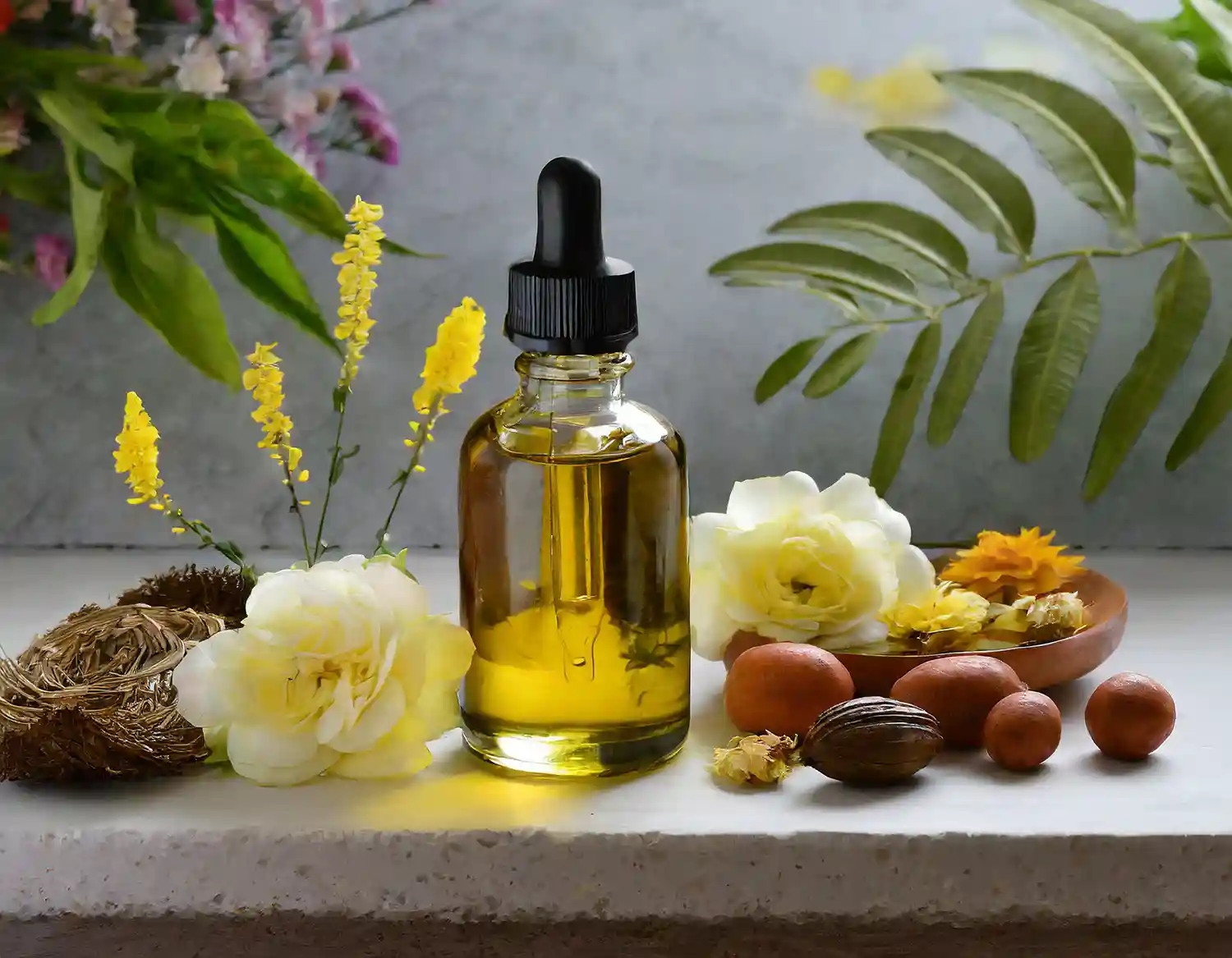Carrier oils are essential in the world of essential oils and skincare, serving as the base for diluting concentrated essential oils and enhancing the benefits of topical applications.
Understanding how to choose and use carrier oils effectively can significantly impact the efficacy of your skincare regimen and the safety of your essential oil applications. This guide will walk you through the essential aspects of selecting and using carrier oils for optimal results.
What Are Carrier Oils?
Vegetable oils called carrier oils are obtained from the fatty parts of plants, like seeds, nuts, or kernels. They are used to dilute essential oils, making them safe for topical application and enhancing their absorption into the skin. Carrier oils also have their own beneficial properties, contributing to the overall effectiveness of the skincare or therapeutic blend.
Benefits of Carrier Oils
- Dilution: They dilute essential oils, reducing the risk of skin irritation or sensitivity.
- Moisturization: Many carrier oils provide hydration and nourishment to the skin.
- Absorption: They facilitate the absorption of essential oils into the skin.
- Customization: They allow for personalized blends tailored to specific skin types or needs.
Choosing the Right Carrier Oil
Selecting the appropriate carrier oil depends on various factors, including your skin type, the essential oils you’re using, and your specific skin care needs. Here’s a guide to help you choose the best carrier oil for your requirements:
1. Consider Your Skin Type
Different carrier oils have distinct qualities that suit different kinds of skin. Here are some common carrier oils and their benefits:
- Jojoba Oil: Similar to the skin’s natural sebum, making it suitable for all skin types, including oily and acne-prone skin. It helps balance oil production and provides hydration.
- Argan Oil: Rich in antioxidants and essential fatty acids, ideal for dry or mature skin. It provides intense moisture and helps reduce signs of aging.
- Sweet Almond Oil: Nourishing and soothing, making it suitable for dry or sensitive skin. It helps improve skin elasticity and reduce inflammation.
- Grapeseed Oil: Light and non-greasy, making it ideal for oily or acne-prone skin. It has astringent properties and helps tighten the skin.
2. Evaluate the Essential Oils
Consider the essential oils you plan to use and their properties. Some carrier oils complement specific essential oils better than others:
- Lavender Oil: Can be blended with soothing carrier oils like chamomile or jojoba for calming effects.
- Tea Tree Oil: Works well with carrier oils that have astringent properties, such as grapeseed or jojoba, for acne treatment.
- Rosemary Oil: Blends well with carrier oils like almond or olive, which support hair and scalp health.
3. Check for Allergies and Sensitivities
Perform a patch test before using a new carrier oil to ensure you don’t have any allergic reactions or sensitivities. Apply a small amount of the oil to a small area of your skin and wait 24 hours to observe any adverse reactions.
4. Look for Quality and Purity
Choose carrier oils that are pure, unrefined, and free from additives or preservatives. Opt for cold-pressed oils, as they retain more of their natural nutrients and beneficial properties. Look for oils labeled as organic or therapeutic-grade for higher quality.
How to Use Carrier Oils with Essential Oils
1. Dilution Ratios
Due to their high concentration, essential oils must always be diluted before being applied. The recommended dilution ratio varies based on the essential oil’s potency and the intended use. General guidelines include:
- For Facial Applications: Use a 1-2% dilution. This equates to 1-2 drops of essential oil per teaspoon (5 mL) of carrier oil.
- For Body Applications: Use a 2-5% dilution. This equates to 2-5 drops of essential oil per teaspoon (5 mL) of carrier oil.
- For Sensitive Areas: Use a 1% dilution to minimize irritation.
2. Blending Essential Oils and Carrier Oils
To create an effective blend, follow these steps:
- Select Your Carrier Oil: Choose a carrier oil based on your skin type and the essential oils you plan to use.
- Add Essential Oils: Using the recommended dilution ratio, add the essential oils to the carrier oil.
- Mix Thoroughly: Blend the oils thoroughly to ensure an even distribution of essential oils throughout the carrier oil.
3. Application Methods
Carrier oil blends can be applied in various ways depending on their purpose:
- Topical Application: Apply the diluted oil blend directly to the skin. Gently massage the blend into the desired area, such as the face, body, or scalp.
- Bath Soak: Add a few drops of the carrier oil blend to your bath for a soothing and aromatic experience. Mix the oils thoroughly with the water to prevent floating undiluted essential oils on the surface.
- Massage: Use the carrier oil blend as a massage oil to relax muscles and enjoy the benefits of essential oils.
4. Storage and Shelf Life
Proper storage is essential to maintain the quality of carrier oils and essential oil blends. Follow these tips:
- Store in Dark Containers: Use dark glass bottles to protect the oils from light, which can degrade their quality.
- Keep in a Cool, Dry Place: Store oils away from heat and humidity to prolong their shelf life.
- Check Expiration Dates: Carrier oils have varying shelf lives. Refer to the expiration dates and discard any oils that have become rancid or have changed in color or smell.
Benefits and Precautions
Benefits
- Enhanced Skincare: Carrier oils provide additional skin benefits, such as hydration, nourishment, and improved elasticity.
- Safe Application: Dilution with carrier oils makes essential oils safe for topical use, reducing the risk of irritation or adverse reactions.
- Personalized Blends: Customize your blends based on skin type, needs, and preferences.
Precautions
- Avoid Eye Contact: Keep essential oil blends away from sensitive areas such as the eyes.
- Use as Directed: Follow recommended dilution ratios and application guidelines to avoid adverse effects.
- Consult a Professional: If you have any medical conditions or are pregnant, consult a healthcare professional before using essential oils or carrier oils.
Choose and Use Carrier Oils
Choosing and using carrier oils for essential oils and skincare involves understanding your skin type, selecting high-quality oils, and applying them correctly. By following these guidelines, you can enhance the benefits of essential oils, ensure safe application, and create effective skincare blends.
Whether you are seeking hydration, anti-aging benefits, or relaxation, carrier oils play a crucial role in maximizing the efficacy of your essential oil regimen and achieving healthier, more radiant skin.
Keep an eye for more latest news & updates on Hint Insider!




